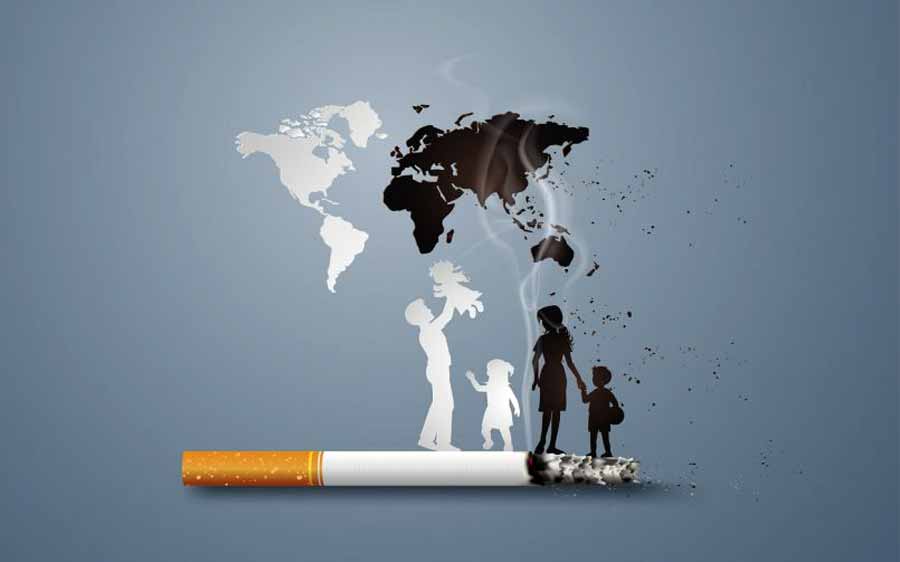Anti-Tobacco Day
Anti-Tobacco Day is observed around every year on 31 May. The Member States of the World Health Organization (WHO) created this day in 1987 to draw global attention of the tobacco epidemic and the preventable death and disease it causes.
In 1987, the World Health Assembly passed a resolution calling 7 April, 1988 to be the “World No-Smoking Day.” In 1988, a resolution was passed, calling for the celebration of World No Tobacco Day every year on 31 May. It aims to reduce the deaths from tobacco-related health problems.
Tobacco is the second major cause of death in the world. It is well known that half the people who smoke regularly today – about 650 million people – will eventually be killed by tobacco. Equally alarming is the fact that hundreds of thousands of people who have never smoked die each year from diseases caused by passive smoking.
Also Read:
- Smoking Should Be Banned In Public Places?
- World Cancer Day
- Prevention of Cancer Disease
- Say ‘NO’ to Drugs
- Do Not Destroy Your Life in Smokes

WHO themes raise awareness about the existence of a wide variety of deadly tobacco products and encourage countries to work towards strict regulations. Tobacco use is responsible for approximately one in 10 premature deaths among adults worldwide.
The global burden of deaths attributable to tobacco use each year is estimated to double from 5 million in 2005 to 12 million in 2022.
The tobacco consumption scenario in India is quite grim. There are about 225 million tobacco users in a population of 1.4 billion. The government generates a revenue of nearly Rs 5,000 crore through tobacco sales, and it spends an estimated Rs 13,500 crore on tobacco-related diseases.
In India, an estimated 8 lakh people die every year from tobacco-related diseases. What’s more, a WHO study says that tobacco is now being actively marketed via movies. By virtue of its size, popularity and tremendous reach, the Indian cinema has the power to influence attitudes and consumer behaviour of its audiences.
The threat is truly grave as youth form a large majority of the cinema going audience. Currently, 76% of all Indian movies portray tobacco unwittingly or at the behest of tobacco companies.
In order to curtail the health and economic hazards of tobacco, it is necessary to increase awareness among the public, especially among the youth. It is imperative that the social barriers be penetrated and all sections of the society are made aware of the evils of tobacco.
Anti-Tobacco Day focuses on cent per cent smoke-free environment as the only effective measure to protect the public, including women and children and people at the workplaces, from exposure to second-hand tobacco smoke (SHS).
SHS has officially been classified as carcinogenic (cancer causing) in humans. It causes heart diseases and many serious respiratory and cardiovascular diseases in children and adults, often leading to death. Exposure to SHS occurs anywhere smoking is permitted whether at homes, workplaces, public places etc.
WHO estimates that around 700 million children, or almost half of the world’s children, breathe air polluted by tobacco smoke, particularly at home.
Table of Contents
Findings from the Global Youth Tobacco Survey among students 13 to 15 year old in 132 countries between 1999 and 2015 show that:
- 9% students are exposed to SHS at home
- 8% students are exposed to SHS in public places
- 1% students surveyed express support for smoking bans in public places
The International Labour Organization (ILO) estimates that at least 2 lakh workers die every year due to exposure to SHS at work. The evidence demands an immediate, decisive response to protect the health of all people. Only 100% smoke-free environments provide effective protection.
Several countries and hundreds of sub-national and local jurisdictions have successfully implemented laws that require almost all indoor workplaces and public places to be 100% smoke-free with legislation banning smoking in workplaces, to protect the health of all workers.
Strengthening of the implementation of the existent legislation is an important issue to make population aware of the dangers of the exposure to the SHS. Smoke-free environments are not only healthier, but also feasible and realistic in a variety of contexts.
Stopping tobacco step by step is difficult. Stopping it at once is easier. There is no harmful effect in stopping tobacco suddenly. The problems that are caused by stopping tobacco are temporary and will last for only five to seven days.
Tips to Quit Smoking
- Take a day at a time.
- Postpone each cigarette by one hour.
- Do not buy in packs. Do not keep a stock of tobacco or cigarettes.
- Tell your family, friends and colleagues that you are quitting tobacco and want their support.
- Change your environment.
- Get rid of all ashtrays in your house.
- Make your home a tobacco-free zone.
- Craving stage does not last for more than five minutes. Wait out the craving.
Benefits to Quit Smoking
If you are seriously considering quitting smoking, you should be looking at the benefits of kicking the habit.
- After 20 minutes, blood pressure and pulse rate return to normal. After eight hours, oxygen levels in the blood returns to normal. Chances of heart attack start falling.
- After 24 hours, carbon monoxide is eliminated from the body. Lungs clear out mucus and other debris.
- After 48 hours, nicotine is no longer detectable in the body. Ability to taste and smell is improved.
- After 72 hours, breathing becomes easier as bronchial tubes relax. Energy level increases.
- After two to 21 weeks, circulation improves throughout the body.
- After three to nine months, breathing problems such as coughing and shortness of breath decreases. The overall lung function increases by five to 10 percent. After five years, risk of heart attack falls to about half of that of a smoker.
- After 10 years, risk of lung cancer falls to about half of that of a smoker. Risk of heart attack falls to about the same as non-smokers.












































